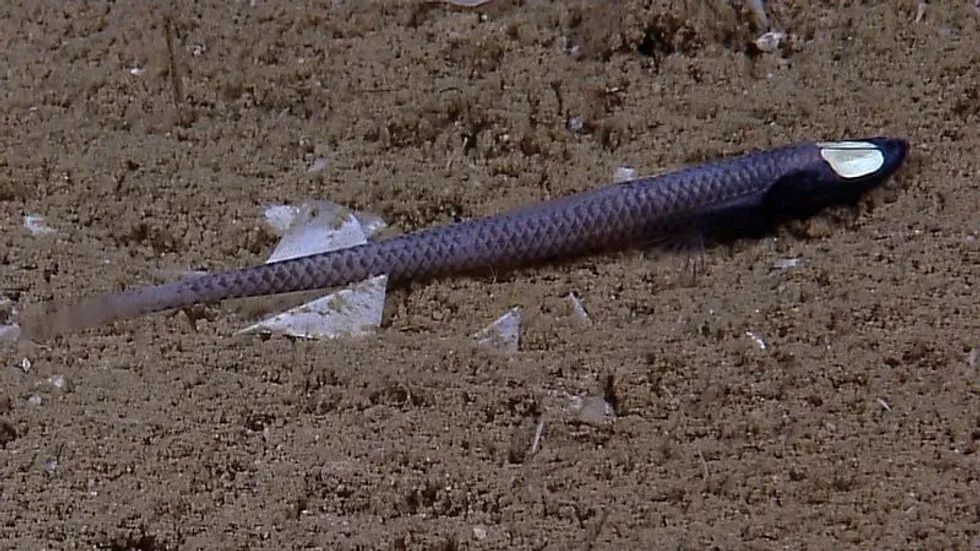The Earth is a wonderful place and the ocean is a fascinating place. The deep oceans have secrets hidden within them.
As humans, the more we try to explore these deep dark waters, the more we get surprised. The more we find out about the species inhabiting these untouched waters, the more they surprise us by their presence. And the fact is that time and again, we humans have been challenged by the science of deep-sea biology.
Underwater explorers work under great pressure. Yes, the literal pressure of water increases every ten meters depth per square inch of surface area. Yet, they gather information with the help of science and technology.
These explorers have found many species in these deep-sea waters with different modified characteristics. Bioluminescence is one such characteristic feature of most of the creatures living in the depth of the oceans.
An adaptation to probably see in the deep waters where light finds no road. One such fish species is the Ipnops murrayi. Little is known about this fish.
Learn more about some other fish including codfish facts and catfish facts.
Ipnops Interesting Facts
What type of animal is an Ipnops?
Ipnops murrayi is a fish. They are tiny and slender fish that are found in the waters of the deep sea.
What class of animal does an Ipnops belong to?
Ipnops murrayi fishes belong to the Actinopterygii class of the Animalia kingdom. This class of fish are known as ray-finned fish. They belong to the Ipnops genus of the Ipnopidae family. This family of fishes has a slender body. In this genus, the most prominent species are Ipnops meadi (also known as Grideye fish) and Ipnops agassizii.
How many Ipnops are there in the world?
Exact information on the population count of Ipnops fishes is not available.
Where does an Ipnops live?
Ipnops murrayi are found in the Atlantic and Indo-Pacific Oceans, and their distribution varies with the depth they are found in. Grideye fish of this genus are found in deeper waters.
What is an Ipnops’ habitat?
Ipnops murrayi fishes prefer to live near the ocean beds in the bathyal and abyssal zones.
Among Ipnops murrayi, Ipnops agassizii and Ipnops meadi (also known as grideye fish) of this genus, the distribution of the first two are found above 9,842.5 ft (3000 m) sea depth, and grideye fish distribution is found below 10,826.8 ft (3300 m) sea depth.
Who do Ipnops live with?
Ipnops murrayi live in groups.
How long does an Ipnops live?
No information is available on the lifespan of Ipnops murrayi. The species are known to humans only from a century ago. However, with the increase in deep-sea expeditions, data about these fishes is being collected slowly but surely.
How do they reproduce?
Ipnops murrayi are hermaphroditic species having both male and female gonads in a single organ. According to a source, these fishes usually lay and fertilize 85 - 300 eggs in a clutch, and some may even lay up to 900 eggs. However, whether it is done at a time or over a period of time is unknown.
What is their conservation status?
The conservation status of Ipnops murrayi is Not Evaluated. These are fishes that live in the deep dark waters of the ocean, have been discovered only in recent times, with the recent scientific advancements and deep-sea expeditions, some aspects of these fish are being found out, let alone evaluating their status.
Ipnops Fun Facts
What does Ipnops look like?

Ipnops fishes are small vertebrates living in deep-sea water. They have long, slender bodies, just like other members of their family. Ipnops fishes have modified eyes on the top of their head that are described as photosensitive plates. The species have large mouths with many small teeth.
They have transparent bones, and their bodies are said to be bioluminescent. They have soft dorsal and anal rays and multiple pectoral fin rays and vertebrae common to this class of fishes. Research is underway to understand the biology of these fishes.
How cute are they?
This class of fish is very differently modified from other fishes, making it enjoyable to study their biology, though we are not convinced that they are cute!
How do they communicate?
Ipnops fishes have well-modified and developed lateral line systems with sensory organs to detect vibration and pressure gradients in the deep-sea water around them.
How big is an Ipnops?
Ipnoops fishes grow between 5.31 -5.70 inches (13.5 - 14.5 cm) in length. They have an elongated body that slims down towards the tail.
How fast can an Ipnops move?
No information is available on the speed at which this species of fish moves in the deep sea.
How much does an Ipnops weigh?
No information is available on the weight of this species of fish. However, these are described as small and slender fishes and could weigh few ounces.
What are the male and female names of the species?
These species do not have any specific names based on their sex. In fact, they are hermaphroditic species, which means both male and female gonads are found in one fish.
What would you call a baby Ipnops?
No specific term is given to the baby Ipnops. They are just called juvenile Ipnops. According to one study, the larvae travel up in the sea to lesser depths, and as the juveniles grow, they rejoin the adults at greater depths.
What do they eat?
Ipnops fishes are known to eat crustaceans like krill, mantis shrimp, and polychaete worms. This was identified by studying the stomachs of the captured specimens. They have a large mouth with multiple teeth and well-developed gill rakers, and their study help in correlating the feeding behavior of these fishes.
Are they poisonous?
No information is available on them being venomous or poisonous.
Would they make a good pet?
No information is available on keeping this species fishes as pets. These are deepwater fishes that live in the dark depths of the sea and have only recently been discovered.
Did you know...
As discussed earlier, there are three known species of Ipnops, namely Ipnops murrayi, Ipnops agassizii, and Ipnops meadi (also known as grideye fish). In this genus, the species are distinguished according to their distribution known so far unless otherwise noted.
These species were first discovered in 1878 by Dr. Albert Günther when he was on an expedition on HMS Challenger.
O.Munk, of the Institute for Comparative Anatomy and Zoological Technique, wrote about the species in his write-up entitled ‘The Eyes of Ipnops Murrayi’ in 1878.
Do they bite?
No information is available on whether this species fishes bite or not. But yes, they have numerous small teeth in their mouth.
Do humans eat them?
No information is available on whether humans eat this deep-sea species or not.
Here at Kidadl, we have carefully created lots of interesting family-friendly animal facts for everyone to discover! Learn more about some other fish including swai fish facts and skate fish facts.
You can even occupy yourself at home by coloring in one of our free printable Ipnops coloring pages.









